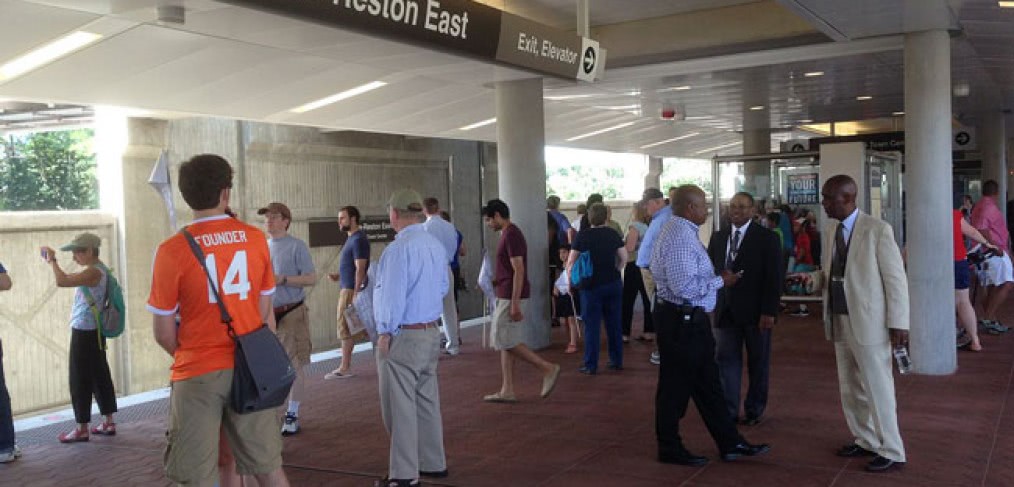
TECHNOLOGY AND TRANSIT: STRENGTHENING TOD WITH GIS (Part 2)
As of July 26 2014, the Silver Line has officially arrived in Reston. Although phase 2 of the Silver Line and the Reston Town Center station will not be completed until 2018, the train takes visitors directly from Downtown DC to Reston. People in Reston have already started to feel happiness from the easy access to so many destinations in the DC metropolitan area. But after people get off the train, would it be easy to get around Reston without driving a car? Would it be convenient to get to destinations in Reston knowing that Reston Town Center, the business core of the city, is more than one mile from the Wiehle-Reston East station? As I stated in my last blog post, my research is focused on analyzing connectivity and accessibility provided by the multimodal network. I hope to get my answers by first looking at the existing transit serving the Reston community.
This area of northern Virginia currently has two major transit systems, Fairfax Connector and WMATA. Both of them provide downloadable GTFS data that allows me to acquire the detailed transit schedule and associated geographic information, including locations of all the transit stops. After converting the data to a GIS recognizable format, I managed to present the information of transit stops and routes serving Reston overlaid with the satellite map provided by ArcGIS online World Imagery. Another great resource I found online is the LINK website that offers very helpful maps and information for anyone in and around Reston. The guide on Silver Line bus service is a favorite of mine. You will find everything you need to direct you once you get off the Silver Line train. It is clearly stated in the guide that Wiehle-Reston East station, as the last of the five for phase 1 of the new Silver Line stations, connects Reston to the greater Washington-area transit network. This extensive bus route previously served West Falls Church station and now includes the new Wiehle-Reston East station. There are also 24 Fairfax Connector routes that link riders to this new Silver Line station and the larger WMATA metro network. It is also noteworthy that bus riders will enjoy increased service frequency, particularly on the bus routes connecting the Wiehle-Reston East station and Reston Town Center. Combined with information from the transit diagram I created, I can conclude that the arrival of Silver Line has a big impact on how people travel in and around Reston. Before the Phase 2 Silver Line and Reston Town Center station are built, the bus remains the primary transit mode to connect people in Reston to major destinations and the Metro system.
Reston Now, a local news website recently conducted an online poll to ask how the Silver Line is working so far. Out of 345 respondents, 48% of them acknowledged it has improved their life. I see this as the beginning of a new era for Reston. With the completion of Phase 2 of the Silver Line, urban transit will play an even more important role in helping the city become more connected and livable. Reston Town Center station will become Reston’s “downtown” metro stop that brings more opportunity for housing and shopping. To analyze Silver Line’s impact, the next step of my research is to integrate the shifted transit schedule after the opening of the Phase 1 Silver Line, mapping out the transit shed in travel times of 15 and 30-minute intervals. I will compare this outcome with numbers prior to the Silver Line’s opening. If data is available, I will try to simulate the scenario with the completed Silver Line, including future phases. RTKL successfully helped defined the unique character of suburban downtown for Reston in the last century, and it’s important that future planning and design accommodates new growth and encourages transit use. I hope we can make a continued contribution in shaping a more urban, pedestrian and transit friendly Reston in the 21st century with state-of-the-art technology.
Cover image via Wikimedia (Antony-22)

